
In America, the drug epidemic is at an all-time high. Drugs and alcohol disease awareness ads seem to focus on the “shock factor” for their point of view. This approach makes me wonder if these ads are the most effective way to create change in our society. They visualize the problem of addiction, but don’t offer solutions. As stewards in the healthcare space, it’s important for us to look at how our targets are being marketed to and the messaging they are receiving from a disease awareness standpoint before we deliver solutions.
Lacey Christman is group creative director at Carling Communications.
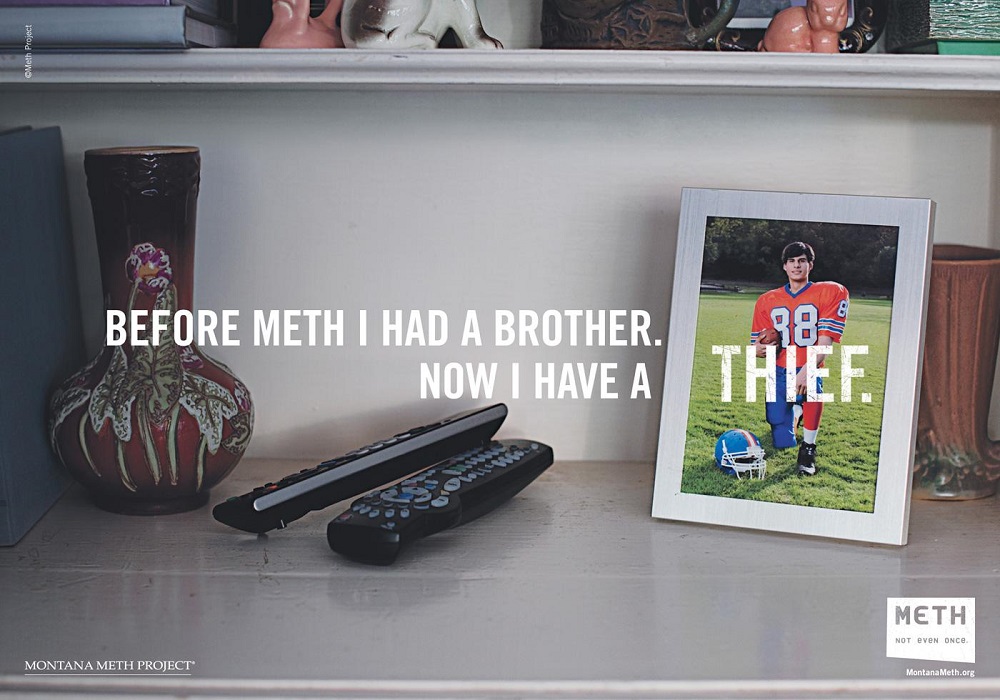
Thief
Montana Meth Project, Venables Bell + Partners
How quickly can someone who is active in their community — a brother, a son, someone you would least expect — become a drug addict? Sometimes there are no warning signs. This ad does a good job bringing to the forefront the idea drugs don’t discriminate. Society needs to accept addiction can happen to anyone. This ad subtly shows drug addiction affects more than just the user — it affects the entire family. Like any disease, it becomes a family problem.
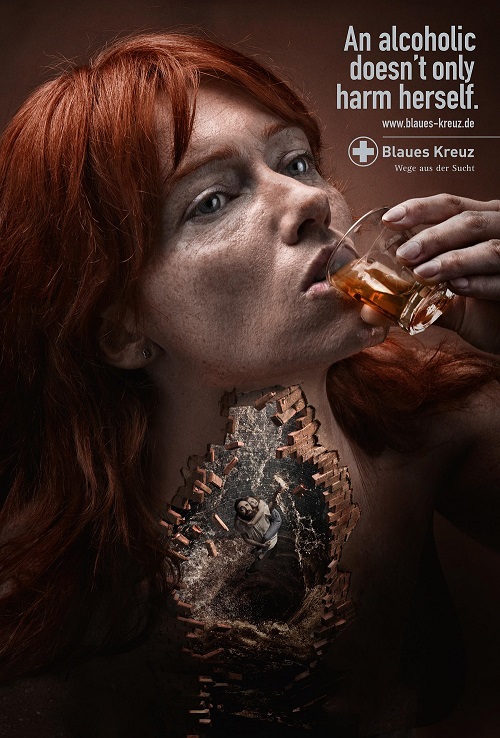
Downfall
Blaues Kreuz, BBDO
Alcoholics not only harm themselves, but also their partners and children. I like the way this ad clearly ties every drink this woman swallows as going directly to her family. It becomes not only her downfall, but also the downfall of their relationships. It’s beautifully art-directed as conveyed by the absent look on her face in juxtaposition to the terror seen in the husband and child in her throat.
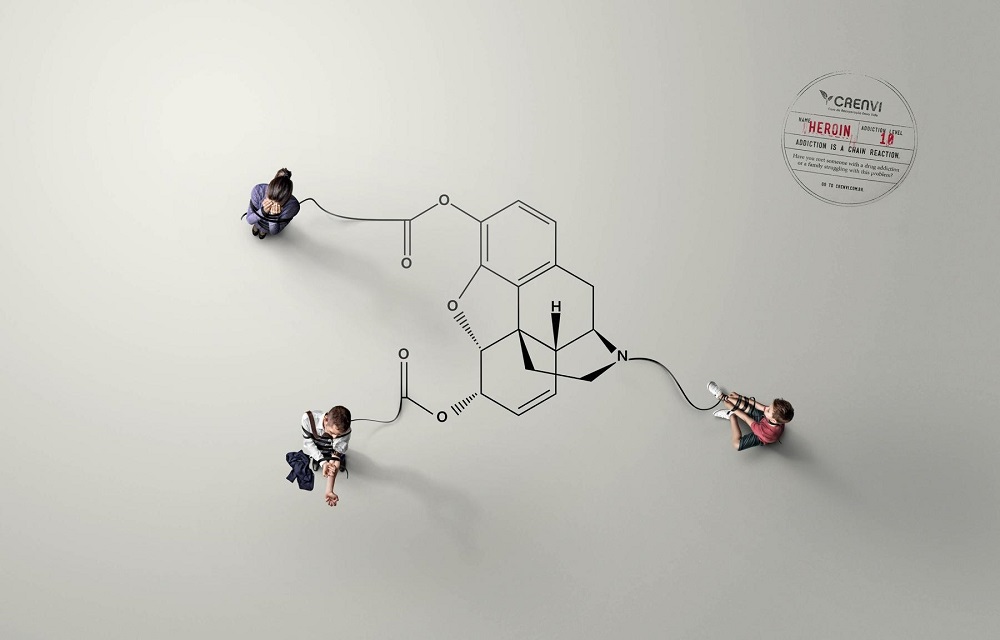
Heroin
Crenvi, Bronx Comunicação
No matter where in the world we see these ads, they all have one common thread — addiction is never a solo problem. This ad takes a spin on how a family is portrayed, intertwining the addiction problems of the husband and father, while all are connected in pain by the molecular structure of heroin. The man’s suit subtly hints addiction doesn’t discriminate.
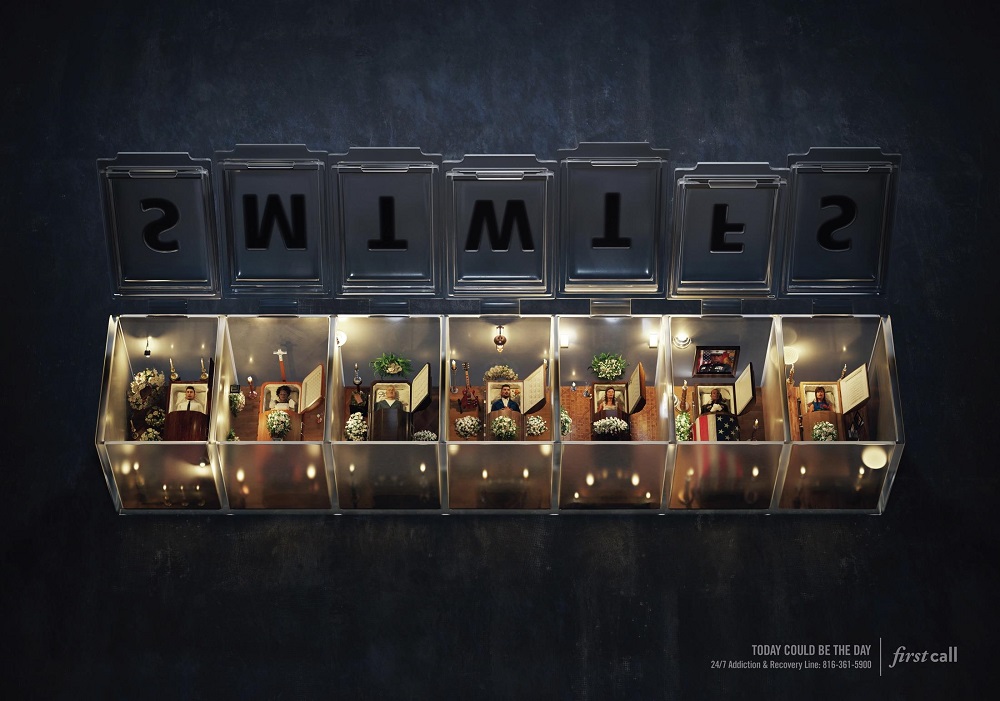
Pillcase — Caskets
First Call, VML
First Call took quite a different approach to a recovery helpline ad, stating, “Today could be the day [you overdose and die].” The pill case in the ad is a CGI-rendered metaphor for the unfortunate reality of opioid addiction. Traditional help hotline ads are either encouraging and hopeful or someone on the edge of defeat. This ad is a more abrupt, gruesome take on reality.
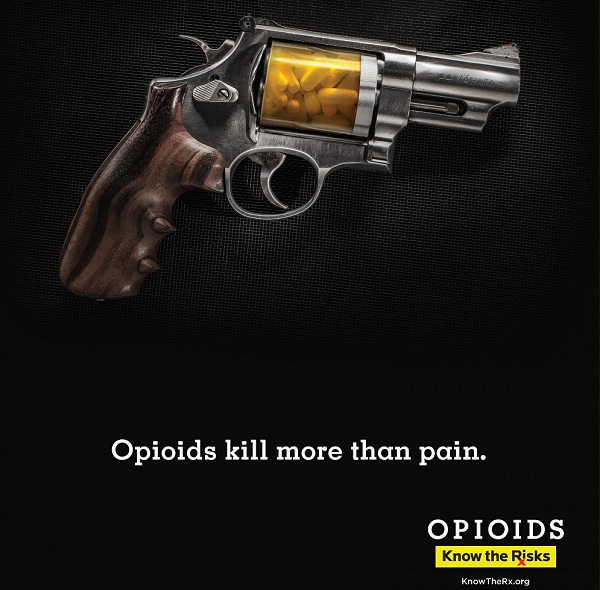
Know the Rx Gun
The Cuyahoga County Opioid Marketing Task Force, Doner
Drug overdoses in the U.S. kill more people than gun homicides and car crashes combined. People know the heroin epidemic is a problem, but they don’t realize how it begins. Focusing on early intervention, Cuyahoga County in Ohio and local health systems partnered to address the epidemic. This ad’s simple, clean design conveys how quickly an innocent prescription for pain can escalate into something lethal.
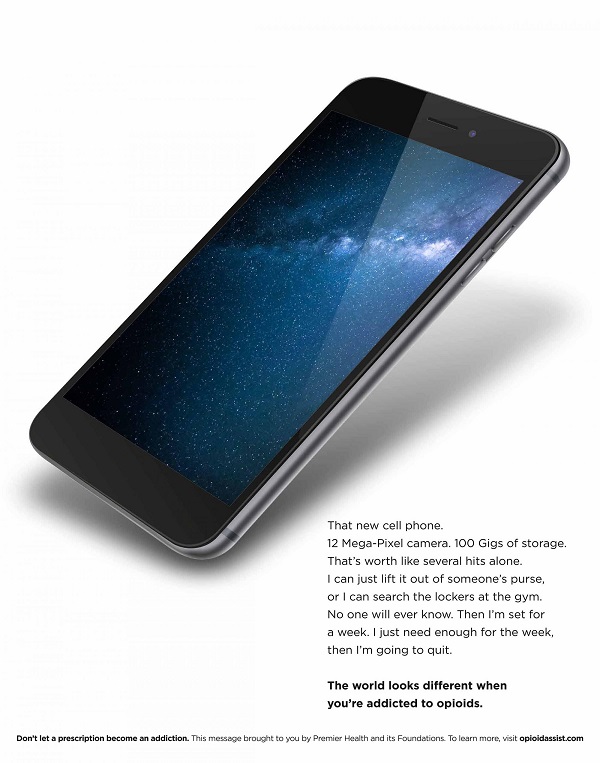
Opioid Fashion
Premier Health, DeVito/Verdi
At first this looks like an ad for a sleek new phone, but when you look closer, it has a surprising twist. By not looking like a typical addiction awareness ad, it increases the chances of viewers continuing to read and actually getting the important message. Overall, it successfully gives viewers a glimpse into the realities of what goes through an addict’s head when they want one more high, although it rarely ends there.
From the November 01, 2018 Issue of MM+M - Medical Marketing and Media






